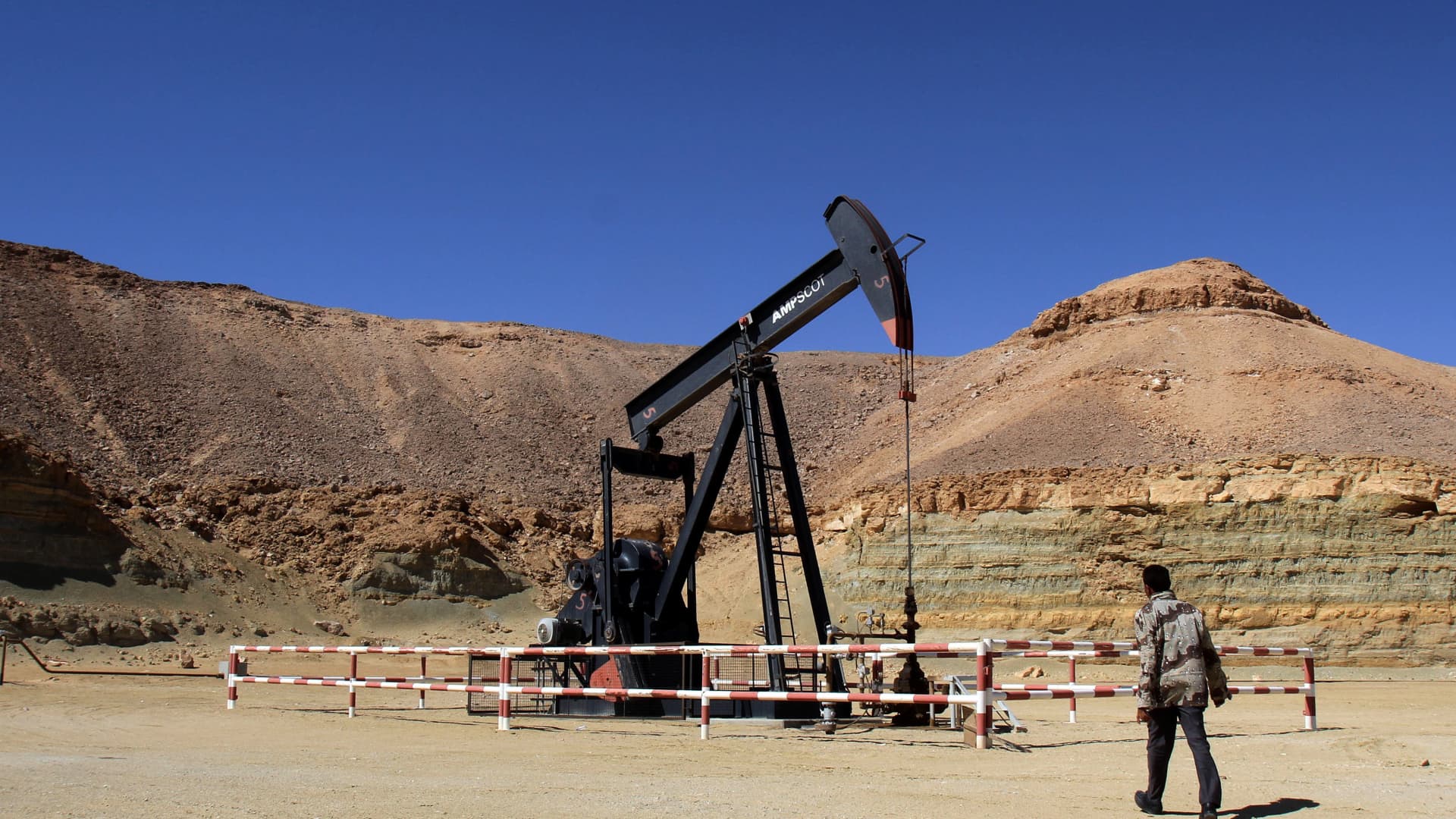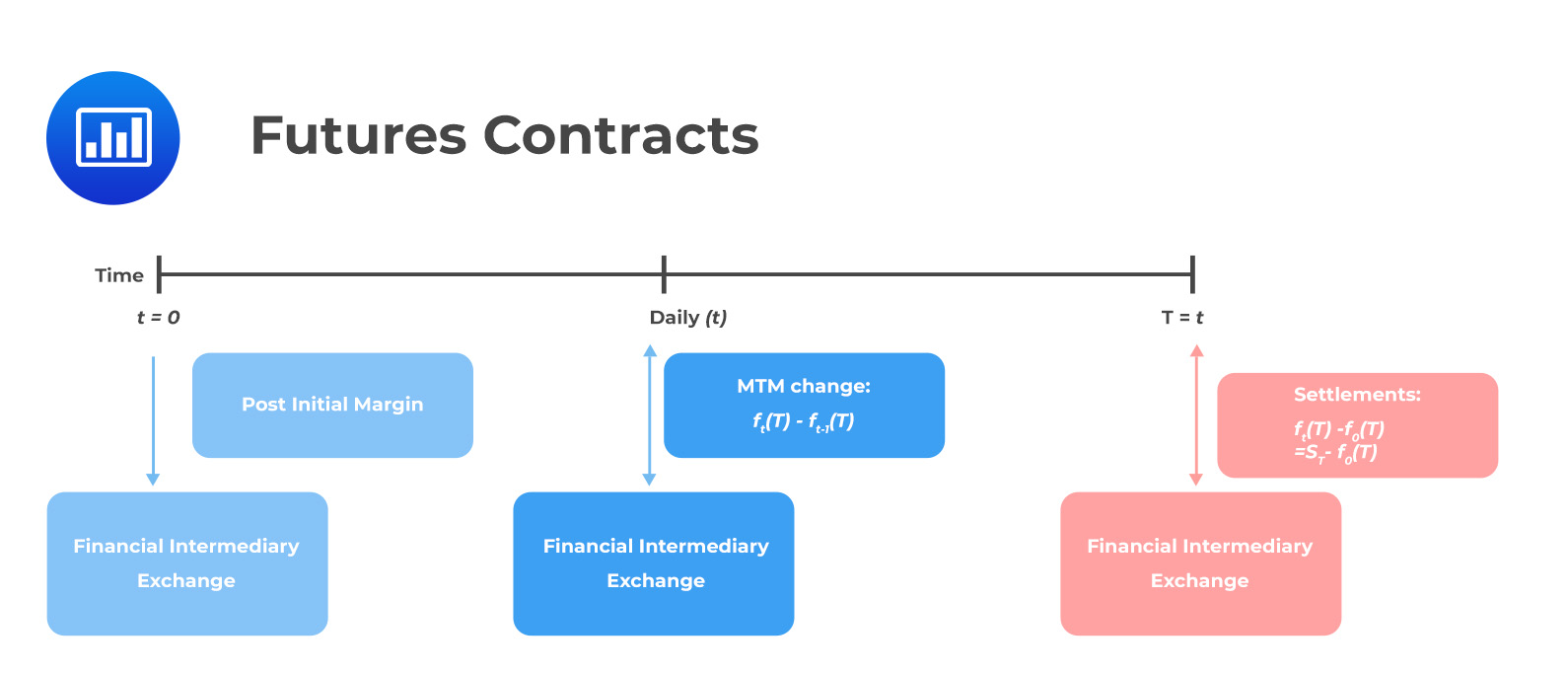

Finance
How To Invest In Oil And Gas Stocks
Published: January 17, 2024
Learn how to invest in oil and gas stocks and explore the opportunities they present in the finance industry. Discover strategies and tips for successful investing.
(Many of the links in this article redirect to a specific reviewed product. Your purchase of these products through affiliate links helps to generate commission for LiveWell, at no extra cost. Learn more)
Table of Contents
- Introduction
- Understanding the Oil and Gas Industry
- Assessing the Risks and Rewards of Investing in Oil and Gas Stocks
- Types of Oil and Gas Stocks to Consider
- Important Factors to Consider Before Investing
- Steps to Invest in Oil and Gas Stocks
- Analyzing Oil and Gas Companies
- Evaluating Oil and Gas Financials
- Strategies for Successful Investing in Oil and Gas Stocks
- Risks to be Aware of when Investing in Oil and Gas Stocks
- Conclusion
Introduction
Investing in the stock market can be a great way to grow your wealth and secure a stable financial future. When it comes to choosing which stocks to invest in, the oil and gas industry is a sector that has always captured the attention of investors. Oil and gas stocks, also known as energy stocks, offer the potential for significant returns due to the global demand for these resources.
The oil and gas industry plays a vital role in powering global economies, as it fuels transportation, manufacturing, and other essential sectors. This creates a constant demand for oil and gas, making it an attractive area for investment. However, investing in oil and gas stocks also comes with its own set of risks and challenges that need to be carefully considered before diving in.
In this article, we will take a closer look at how to invest in oil and gas stocks and the key factors you need to consider for successful investing in this sector. Whether you are a seasoned investor looking to diversify your portfolio or a novice investor just starting out, understanding the intricacies of the oil and gas industry and the specific risks and rewards associated with investing in this sector is crucial.
Before we delve into the details of investing in oil and gas stocks, it is important to have a solid understanding of the industry itself. This will enable you to make informed decisions and identify potential investment opportunities.
Understanding the Oil and Gas Industry
The oil and gas industry is a complex and multifaceted sector that encompasses exploration, production, refining, transportation, and distribution of oil and natural gas resources. It is a critical global industry that influences various sectors of the economy and impacts the daily lives of individuals around the world.
Oil, also known as crude oil or petroleum, is a fossil fuel that is extracted from the earth through a process called drilling. It is then refined into different petroleum products such as gasoline, diesel, jet fuel, and heating oil. Natural gas, on the other hand, is a clean-burning fossil fuel that is primarily composed of methane and is used for heating, electricity generation, and as a feedstock in various industries.
The oil and gas industry plays a pivotal role in the global energy mix. It not only powers transportation and industrial activities but also is a critical component of many everyday products, including plastics, chemicals, and synthetic materials. As a result, the demand for oil and gas remains consistently high, making it a lucrative investment opportunity for many investors.
However, the oil and gas industry is not without its challenges. Volatile oil prices, geopolitical events, regulatory changes, and environmental concerns can significantly impact the profitability and stability of oil and gas companies. It is crucial for investors to stay updated with industry trends, market dynamics, and geopolitical factors that can influence oil and gas prices and investment opportunities.
Furthermore, technological advancements and the exploration of unconventional sources, such as shale oil and gas, have revolutionized the industry in recent years. These advancements have unlocked new reserves and have the potential to reshape the dynamics of the global energy market. Understanding these developments and their potential impact on the oil and gas industry is essential for investors looking to make informed investment decisions.
Overall, to successfully invest in oil and gas stocks, it is crucial to have a comprehensive understanding of the industry’s operations, supply and demand dynamics, global market trends, and the factors influencing oil and gas prices. This knowledge will enable you to identify and assess potential investment opportunities and navigate the risks inherent in the oil and gas sector.
Assessing the Risks and Rewards of Investing in Oil and Gas Stocks
Investing in oil and gas stocks offers the potential for significant rewards, but it also comes with inherent risks that need to be carefully considered. Understanding the risks and rewards associated with investing in this sector is crucial for making informed investment decisions.
One of the primary rewards of investing in oil and gas stocks is the potential for high returns. The demand for oil and gas remains strong, and as economies grow, the need for these resources is only expected to increase. This can lead to substantial profits for investors, especially if they choose the right companies and capitalize on favorable market conditions.
Another reward of investing in oil and gas stocks is the opportunity for dividends. Many oil and gas companies have a history of paying dividends to shareholders, providing a regular income stream. These dividends can be particularly attractive for income-focused investors looking for stable cash flow.
However, it’s important to note that investing in oil and gas stocks also carries significant risks. One of the main risks is the volatility of oil prices. Oil prices are influenced by a range of factors, including global supply and demand, geopolitical events, and production levels. The price of oil can fluctuate dramatically, impacting the profitability of oil and gas companies and, consequently, the value of their stocks.
Geopolitical risks are another important consideration. Conflict, political instability, and regulatory changes in oil-producing regions can disrupt the oil market and affect the profitability of oil and gas companies. Investors must stay informed about geopolitical developments and their potential impact on the industry.
Environmental and sustainability concerns are also significant risks in the oil and gas sector. As the world becomes more environmentally conscious, there is increasing pressure on the industry to transition to cleaner and renewable energy sources. This shift could negatively impact the demand for fossil fuels and pose challenges for oil and gas companies in the long term.
Lastly, the financial health and operational efficiency of oil and gas companies should be carefully evaluated. Companies with high debt levels, inefficient operations, or poor management may face challenges in maintaining profitability and growth. Conducting thorough due diligence and financial analysis can help identify such risks and avoid potential investment pitfalls.
Investing in oil and gas stocks can offer substantial rewards, but it is not without risks. It is crucial for investors to carefully assess these risks and rewards before allocating their capital. By conducting thorough research, diversifying their portfolio, and staying updated with industry trends, investors can make informed decisions and increase their chances of success in the oil and gas sector.
Types of Oil and Gas Stocks to Consider
When considering investing in oil and gas stocks, it is important to understand that there are different types of companies within the industry that you can invest in. Each type represents a different segment of the oil and gas value chain, and has its own set of characteristics, risks, and potential rewards.
1. Upstream Companies: Upstream companies are involved in the exploration and production of oil and gas reserves. These companies are responsible for finding and extracting oil and gas from the ground, often through drilling operations. Upstream companies typically have significant exposure to fluctuations in oil and gas prices and are most influenced by factors such as reserve discoveries, production volumes, and drilling success rates.
2. Midstream Companies: Midstream companies are involved in the transportation, storage, and distribution of oil and gas. They operate pipelines, storage terminals, and other infrastructure that facilitate the movement of oil and gas from the production sites to refineries, distribution centers, and end-users. Midstream companies generally have more stable cash flows and may offer dividend opportunities.
3. Downstream Companies: Downstream companies are involved in refining crude oil into petroleum products such as gasoline, diesel, and jet fuel. They also distribute these products to various markets and end-users, including gas stations, airlines, and industrial consumers. Downstream companies are influenced by factors such as refining margins, demand for refined products, and market competition.
4. Service Companies: Service companies, also known as oilfield services companies, provide specialized equipment, technology, and services to support the exploration, production, and extraction activities of upstream companies. These companies offer services such as drilling, well completion, equipment maintenance, and seismic data analysis. Service companies’ performance is closely tied to drilling activities and capital expenditures by upstream companies.
5. Integrated Oil Companies: Integrated oil companies have operations spanning the entire oil and gas value chain, from exploration and production to refining, marketing, and distribution. These companies have a diversified business model that allows them to capture value at different stages of the value chain. Integrated oil companies may have more stability and resilience due to their diversified operations.
It is important to note that the performance and characteristics of these different types of oil and gas stocks can vary based on various factors, including market conditions, company-specific factors, and industry trends. Before investing, it is recommended to conduct thorough research on individual companies, studying their financials, operational performance, and future growth prospects to make informed investment decisions.
Investing in a diversified portfolio of oil and gas stocks across different segments of the industry can help mitigate risks and take advantage of different opportunities. By considering the different types of oil and gas stocks available, investors can tailor their investment strategy to align with their risk tolerance, investment goals, and market outlook.
Important Factors to Consider Before Investing
Investing in oil and gas stocks can be rewarding, but it is crucial to thoroughly assess certain factors before making investment decisions. By carefully considering these factors, you can increase your chances of making informed and successful investments in the oil and gas industry.
1. Market and Industry Analysis: Conducting a thorough analysis of the oil and gas market and industry trends is essential. Evaluate the supply and demand dynamics, global oil and gas prices, geopolitical factors, and regulatory changes that may affect the industry. Stay updated with market news and trends to identify investment opportunities and potential risks.
2. Company Analysis: Assess the financial health and performance of the oil and gas companies you are considering. Analyze factors such as production volumes, reserve growth, profitability, debt levels, and management track record. Look for companies with strong fundamentals, positive growth outlook, and a competitive advantage in the industry.
3. Risk Assessment: Evaluate the risks associated with investing in the oil and gas industry. Consider factors such as commodity price volatility, geopolitical risks, environmental concerns, and potential regulatory changes. Invest in companies that have mitigated these risks or have a solid contingency plan in place.
4. Diversification: Diversify your oil and gas investments to spread the risk. Consider investing in companies from different segments of the industry, such as upstream, midstream, downstream, and service companies. Diversification can help protect your portfolio from potential losses and capture opportunities across different sectors.
5. Long-term Outlook: Assess the long-term outlook for the oil and gas industry. Research trends in renewable energy, technological advancements, and environmental regulations that may impact the demand for fossil fuels. Consider companies that are adapting to these changes and investing in greener alternatives to ensure long-term sustainability.
6. Portfolio Alignment: Evaluate how investing in oil and gas stocks aligns with your overall investment strategy and portfolio. Consider your risk tolerance, investment goals, and time horizon. Assess whether adding oil and gas stocks to your portfolio will help diversify your investments and enhance potential returns.
7. Professional Guidance: Seek advice from financial professionals, such as financial advisors or investment managers, who have expertise in the oil and gas sector. They can provide valuable insights, perform in-depth analysis, and help you make informed investment decisions based on your financial goals and risk tolerance.
By considering these important factors, you can increase your likelihood of making informed investment decisions in the oil and gas industry. Thorough research, understanding of market dynamics, and risk assessment will help you identify potential opportunities, manage risks, and navigate the complexities of the oil and gas sector.
Steps to Invest in Oil and Gas Stocks
Investing in oil and gas stocks requires careful planning and consideration. Here are the key steps to follow when investing in this sector:
1. Research and Education: Start by educating yourself about the oil and gas industry. Understand the basics of how the industry operates, the factors that influence oil and gas prices, and the different types of oil and gas stocks available. Stay updated with market news and trends to make informed investment decisions.
2. Define Investment Goals and Risk Tolerance: Determine your investment goals and risk tolerance. Consider whether you are looking for long-term growth, income generation, or a combination of the two. Assess your risk tolerance to understand how much volatility you are comfortable with in your investment portfolio.
3. Brokerage Account Setup: Open a brokerage account with a reputable brokerage firm. Ensure that the brokerage offers access to a wide range of oil and gas stocks and provides research tools and resources to assist with your investment decisions.
4. Portfolio Diversification: Diversify your portfolio by investing in a mix of oil and gas stocks from different companies, segments, and geographic regions. This helps spread the risk and potential returns across various investments within the industry.
5. Conduct Company Analysis: Thoroughly analyze oil and gas companies before investing. Consider factors such as financial health, operational efficiency, growth prospects, management quality, and competitive advantage. Look for companies with a strong track record, stable earnings, and a solid growth strategy.
6. Basic Financial Analysis: Review the financial statements of the companies you are considering. Analyze revenue, earnings, profit margins, debt levels, and cash flow. Evaluate their ability to generate consistent profits and finance future growth.
7. Technical Analysis: Utilize technical analysis tools to study stock price patterns, trends, and momentum indicators. This can help identify potential entry and exit points in the market. However, keep in mind that technical analysis should be used in conjunction with fundamental analysis for a more comprehensive investment strategy.
8. Monitor Performance and News: Continuously monitor the performance and news related to the oil and gas industry. Stay informed about market trends, company announcements, oil and gas price fluctuations, and geopolitical developments. This information will help you make informed decisions and adjust your investment strategy if necessary.
9. Review and Rebalance: Regularly review your oil and gas investments and assess their performance in relation to your investment goals. Rebalance your portfolio if necessary to maintain the desired asset allocation and risk profile.
10. Seek Professional Advice: Consider consulting with a financial advisor or investment professional who specializes in the oil and gas sector. They can provide personalized guidance, perform in-depth analysis, and help you navigate the complexities of investing in oil and gas stocks.
By following these steps, you can approach investing in oil and gas stocks in a systematic and informed manner. Remember to conduct thorough research, diversify your portfolio, and stay up to date with industry trends to make sound investment decisions in this dynamic sector.
Analyzing Oil and Gas Companies
When investing in oil and gas stocks, it is essential to conduct a thorough analysis of the companies you are considering. Analyzing oil and gas companies involves evaluating various factors that can impact their financial performance and growth prospects. Here are some key aspects to consider when analyzing oil and gas companies:
1. Reserve Base: Assess the company’s reserve base, which refers to the estimated amount of oil and gas reserves that the company owns. Companies with large and proven reserves have a higher potential for future production and revenue generation.
2. Production Profile: Analyze the company’s production profile and its growth potential. Look for companies with a diversified production portfolio across different regions and assets. Evaluate their historical production trends and their ability to increase production in the future.
3. Cost Structure: Evaluate the company’s cost structure, including its operating costs, capital expenditures, and exploration expenses. Companies with efficient cost structures are better positioned to generate higher profits and withstand fluctuations in oil and gas prices.
4. Financial Health: Review the company’s financial statements, including its balance sheet, income statement, and cash flow statement. Assess key financial ratios, such as debt-to-equity ratio, current ratio, and return on equity, to evaluate the company’s financial health and stability.
5. Management Team: Evaluate the quality and expertise of the company’s management team. Assess their track record, experience in the industry, and their ability to execute the company’s business strategy. Strong leadership is vital for the success and growth of an oil and gas company.
6. Competitive Advantage: Consider the company’s competitive advantage in the industry. Look for factors such as technological advancements, unique assets, access to new reserves, or strong relationships with partners or customers. A competitive advantage can give the company an edge in a highly competitive market.
7. Sustainability and Environmental Practices: Assess the company’s commitment to environmental sustainability and responsible business practices. Evaluate their efforts to minimize environmental impact, adopt cleaner technologies, and manage social and governance risks. Increasingly, investors are considering environmental, social, and governance (ESG) factors when making investment decisions.
8. Industry Outlook and Trends: Stay updated with the current trends and outlook for the oil and gas industry. Consider factors such as global oil and gas demand, unconventional energy sources, regulatory changes, and geopolitical risks. Understanding industry dynamics will help you make more informed investment decisions.
9. Analyst Research and Recommendations: Consider researching the opinions and recommendations of industry analysts who cover the oil and gas sector. Analyst reports can provide valuable insights into specific companies, their growth potential, and the industry as a whole.
10. Risk Assessment: Conduct a thorough risk assessment by considering factors such as commodity price volatility, geopolitical risks, regulatory changes, and environmental concerns. Evaluate company-specific risks and how well the company is positioned to manage or mitigate them.
By analyzing oil and gas companies using these key factors, you can gain a better understanding of their financial health, growth potential, and ability to weather industry challenges. This analysis will help you make informed investment decisions and build a portfolio of promising oil and gas stocks.
Evaluating Oil and Gas Financials
When investing in oil and gas stocks, it is crucial to evaluate the financial health and performance of the companies you are considering. Analyzing the financials of oil and gas companies provides valuable insights into their ability to generate profits, manage expenses, and navigate the ups and downs of the industry. Here are key aspects to consider when evaluating oil and gas financials:
1. Revenue and Earnings: Review the company’s revenue and earnings figures over multiple periods. Assess the trend in revenue growth and the consistency of earnings. Look for companies that demonstrate stable or increasing revenues and strong earnings growth.
2. Profitability Ratios: Evaluate profitability ratios such as gross profit margin, operating profit margin, and net profit margin. These ratios help assess how efficiently a company is generating profits relative to its revenues and costs. Compare these ratios across companies to identify those with better profit margins.
3. Cash Flow: Examine the company’s cash flow statement to evaluate its cash generation and liquidity. Pay attention to operating cash flow, investing cash flow, and financing cash flow. Positive and consistent cash flow from operations is important for funding capital expenditures and dividend payments.
4. Debt Levels: Assess the company’s debt levels and its ability to manage its debt obligations. Evaluate the debt-to-equity ratio and interest coverage ratio. A lower debt-to-equity ratio indicates a lower level of financial leverage, while a higher interest coverage ratio suggests a company’s ability to cover interest expenses with its earnings.
5. Capital Expenditures: Analyze the company’s capital expenditures (CAPEX) to understand its investment in future growth. Evaluate whether the company is allocating sufficient funds for exploration, development, and acquisition of new reserves. Companies that strategically allocate capital for growth tend to have better long-term prospects.
6. Reserve Replacement Ratio: Assess the company’s reserve replacement ratio, which indicates its ability to replace depleted reserves with new discoveries. A reserve replacement ratio above 100% indicates that a company is growing its reserve base, while a ratio below 100% suggests declining reserves and potential challenges in the future.
7. Dividend Policy: Evaluate the company’s dividend policy and track record of dividend payments. Consider the dividend yield and payout ratio. A consistent history of dividend payments and a reasonable payout ratio indicate the company’s commitment to returning value to shareholders.
8. Efficiency Ratios: Analyze efficiency ratios such as inventory turnover ratio, receivables turnover ratio, and asset turnover ratio. These ratios help assess how effectively the company manages its inventory, collects payments from customers, and utilizes its assets to generate revenue.
9. Comparative Analysis: Compare the financial performance and ratios of the company with its industry peers and competitors. This will provide insights into how the company is performing relative to others in the industry and help identify any strengths or weaknesses in its financial position.
10. Industry and Macroeconomic Factors: Consider the impact of industry and macroeconomic factors on the company’s financials. Factors such as oil and gas prices, regulatory changes, geopolitical events, and market trends can significantly influence the financial performance and outlook of oil and gas companies.
By evaluating oil and gas financials using these key aspects, you can gain a deeper understanding of a company’s financial health, profitability, leverage, growth potential, and ability to withstand industry challenges. This analysis will help you make well-informed investment decisions and build a portfolio of financially sound oil and gas stocks.
Strategies for Successful Investing in Oil and Gas Stocks
Investing in oil and gas stocks can be financially rewarding but also carries inherent risks. To navigate the complexities of the oil and gas industry and increase your chances of successful investing, it is important to adopt effective strategies. Here are some strategies to consider:
1. Conduct Thorough Research: Stay updated with industry news, market trends, and company-specific developments. Conduct comprehensive research on potential investment opportunities, including analyzing financials, exploring growth prospects, and understanding the competitive landscape. Make informed investment decisions based on solid research.
2. Diversify Your Portfolio: Diversification is key to mitigating risks and maximizing returns. Invest in a diversified portfolio of oil and gas stocks across different segments of the industry, such as upstream, midstream, downstream, and service companies. This helps spread the risk and capture opportunities in different sectors.
3. Balance Risk and Reward: Assess the risk-reward ratio of potential investments. Understand the risks associated with investing in the oil and gas industry, including commodity price volatility, geopolitical risks, and environmental concerns. Balance these risks with the potential rewards and consider your risk tolerance when making investment decisions.
4. Long-Term Investment Perspective: Adopt a long-term investment perspective when investing in oil and gas stocks. The industry can be volatile, and short-term price fluctuations should not drive your investment decisions. Focus on the long-term growth potential of the companies you invest in and their ability to weather industry cycles.
5. Monitor Industry Trends: Stay informed about industry trends and upcoming developments. Pay attention to technological advancements, changes in energy policies, and emerging market dynamics that may impact the oil and gas sector. Being aware of these trends can help you identify potential investment opportunities and adjust your portfolio strategy accordingly.
6. Consider ESG Factors: Environmental, social, and governance (ESG) factors are increasingly important for investors. Consider the sustainability practices and ESG initiatives of oil and gas companies. Companies that prioritize responsible business practices and environmental stewardship may be better positioned for long-term success.
7. Stay Updated with Geopolitical Developments: Geopolitical events can significantly impact the oil and gas industry. Keep an eye on global geopolitics and political developments in major oil-producing regions. Understand how geopolitical factors can affect oil prices and the profitability of oil and gas companies in your investment portfolio.
8. Utilize Dollar-Cost Averaging: Consider using a dollar-cost averaging strategy when investing in oil and gas stocks. This involves consistently investing a fixed amount of money at regular intervals, regardless of the current stock prices. This strategy helps reduce the impact of market volatility and allows you to accumulate shares over time.
9. Rebalance and Review Your Portfolio: Regularly review your oil and gas portfolio and rebalance it as needed. As market conditions and company performance fluctuate, rebalancing helps maintain your desired asset allocation and risk profile. Periodically assess the performance of your investments and make adjustments when necessary.
10. Seek Professional Guidance: Consider consulting with a financial advisor or investment professional specializing in the oil and gas sector. They can provide personalized guidance, perform in-depth analysis, and help you navigate the complexities of investing in oil and gas stocks.
By adopting these strategies and combining them with diligent research and disciplined decision-making, you can increase your prospects for successful investing in oil and gas stocks. Remember to align your investments with your financial goals, stay informed, and adapt your strategies as market conditions evolve.
Risks to be Aware of when Investing in Oil and Gas Stocks
Investing in oil and gas stocks can offer significant rewards, but it is crucial to be aware of the risks that come with it. Understanding and managing these risks is essential for successful investing in the oil and gas industry. Here are some key risks to consider:
1. Commodity Price Volatility: Oil and gas prices are highly volatile and can be influenced by various factors such as global supply and demand, geopolitical events, and economic conditions. Fluctuations in oil and gas prices can significantly impact the profitability of oil and gas companies and the value of their stocks.
2. Geopolitical Risks: Geopolitical events, conflicts, and unrest in major oil-producing regions can disrupt the global oil market and impact the profitability of oil and gas companies. Investors need to stay updated with geopolitical developments and assess the potential impact on the companies in their investment portfolio.
3. Regulatory Changes: Regulatory frameworks and policies surrounding the oil and gas industry can change, affecting the operations and profitability of companies. Changes in environmental regulations, taxation, and government policies can impact exploration and production activities, potentially affecting the financial performance of oil and gas stocks.
4. Environmental Concerns: As the world embraces sustainable energy solutions, environmental concerns pose risks for the oil and gas industry. The shift towards renewable energy sources and increasing regulations on carbon emissions can impact the demand for fossil fuels and potentially reduce the profitability of oil and gas companies.
5. Technological Disruptions: Technological advancements and innovations in the energy sector, such as the development of more efficient and cost-effective renewable energy sources, can disrupt the oil and gas industry. Companies that fail to adapt to these technological changes may face challenges in maintaining their competitiveness and profitability.
6. Debt and Financial Risks: Oil and gas companies often carry significant debt to finance their exploration and production activities. High debt levels can make companies vulnerable to changes in interest rates and adversely affect their financial health and ability to withstand market downturns.
7. Operational Risks: The oil and gas industry involves complex and high-risk operations, such as drilling, extraction, and transportation. Accidents, natural disasters, and operational failures can lead to costly disruptions, reputational damage, and financial losses for companies in this sector.
8. Market Sentiment and Investor Confidence: Investor sentiment and market confidence can affect the stock prices of oil and gas companies. Market volatility, economic uncertainty, or negative perceptions of the industry can impact investor confidence and stock performance.
9. Declining Reserves: Oil and gas companies rely on their reserves to generate revenue and sustain long-term growth. Declining or depleting reserves can impact production levels, leading to reduced profitability and potentially lower stock prices.
10. Lack of Diversification: Investing in a limited number of oil and gas stocks without proper diversification can increase the risks associated with this sector. A lack of diversification may expose an investor to concentration risk if a particular company or segment faces challenges or adverse market conditions.
It is important to thoroughly assess these risks and consider them in the context of your investment strategy and risk tolerance. Diversification, staying informed, conducting research, and seeking professional advice can help manage these risks and increase the potential for successful investing in oil and gas stocks.
Conclusion
Investing in oil and gas stocks can be an exciting and potentially lucrative venture for investors looking to grow their wealth. However, it is important to approach this sector with a clear understanding of the industry dynamics, risks involved, and strategies for successful investing.
Throughout this article, we have explored various aspects of investing in oil and gas stocks. We discussed the importance of understanding the oil and gas industry, assessing the risks and rewards, and considering different types of oil and gas stocks available for investment. We also outlined important factors to evaluate before investing, steps to follow when investing, and strategies to adopt for successful investing in this sector.
It is crucial to conduct thorough research, stay updated with industry trends, and assess the financial health of oil and gas companies before making investment decisions. Diversification helps mitigate risks, and a long-term investment perspective enables investors to navigate the volatility of the industry.
While investing in oil and gas stocks carries inherent risks such as commodity price volatility, geopolitical uncertainties, and environmental concerns, there are also significant rewards to be gained. Companies with solid financials, strong management teams, and a competitive advantage can present attractive investment opportunities.
It is important to remember that investing in oil and gas stocks requires careful analysis, ongoing monitoring, and an awareness of industry trends. Seeking professional guidance from financial advisors or investment professionals specializing in the oil and gas sector can provide valuable insights and help make informed investment decisions.
In conclusion, investing in oil and gas stocks can offer potential rewards for investors who are willing to navigate the challenges of this industry. By understanding the nuances of the sector, conducting thorough research, diversifying the portfolio, and staying informed, investors can position themselves for success in this dynamic and influential segment of the market.














